ImageTech Trio 3D Camera [35mm Film]
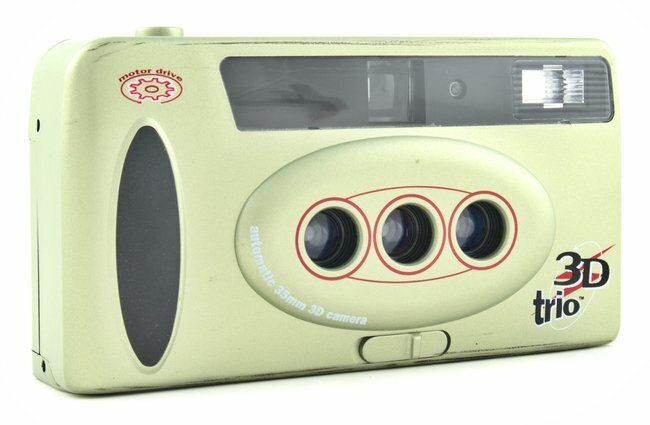
While the 3D Trio camera does not have any mention of ImageTech, the same person or people were likely behind the company. The company listed on the camera box is 3D Image Technology Inc.
When comparing the camera packaging to earlier ImageTech cameras, they look very similar with only minor changes.
Camera History
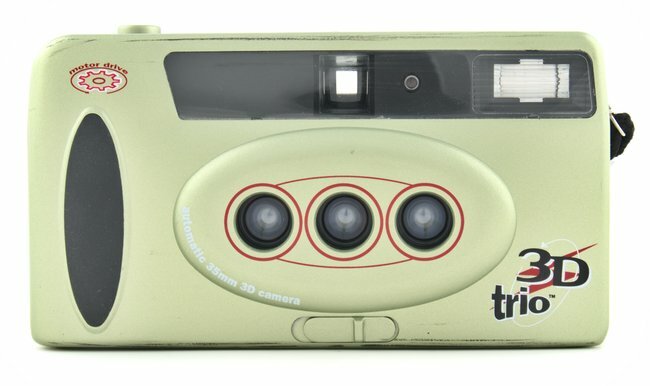
The design of the camera is similar to the three others released under the ImageTech brand, the ImageTech 3D fx, 3D Wizard, and 3D1000.
Each of those models saw additional features added with each new release. The Trio 3D is likely the 4th generation of the three lens lenticular camera design.
The camera was likely produced by a Chinese manufacturer that would use custom branding. This is because several of the cameras can be found with Kalimar branding.
3D Trio Camera Specs
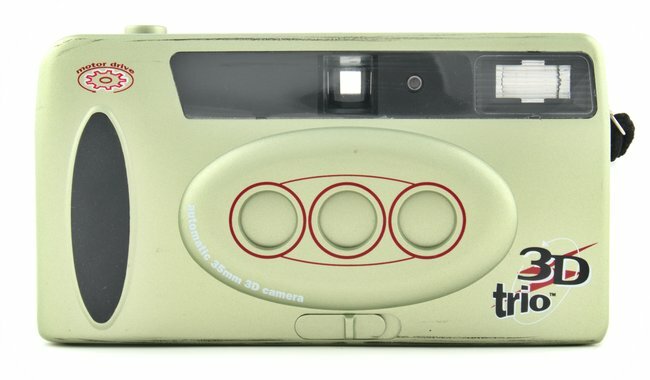
The lens cover on the Trio 3D acts as an on/off switch. Closing the lens cover with shut off the flash and prevent the shutter from firing.
To get the best 3D image effects from the camera have the main subject be 6 - 12 feet (1.8 - 3.6 meters) away.
| Type | 3D 35mm motorized camera with built-in flash |
| Film | 135 negative roll film (ISO 100, 200, 400) |
| Negative size | 3x 17.4 mm x 24 mm (Half frames) |
| Lenses | 3 coated lenses 30mm f/5.6 (3 elements in 3 groups) |
| Focusing | Focus free (fixed), shooting range: 4 ft (1.2m) to ∞ infinity |
| Shutter | Auto; Fixed 1/100 second |
| Aperture | Auto; f/5.6 and f/11 |
| Film advance | Auto-advance; motorized 12 sprocket holes |
| Film rewind | Auto rewind; motorized |
| Viewfinder | 0.7x, Newton viewfinder |
| Power source | 3x AA batteries |
| Dimensions | 140 mm x 75 mm x 40 mm |
| Weight | 230g (without batteries) |
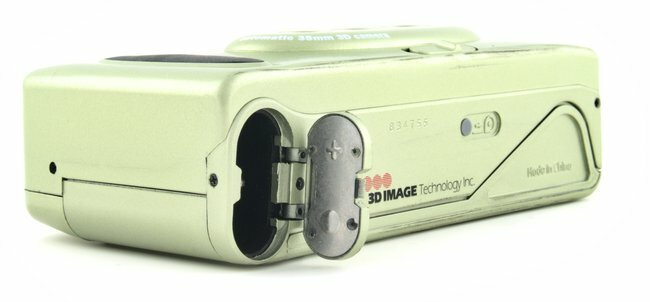
Type of Film to Use
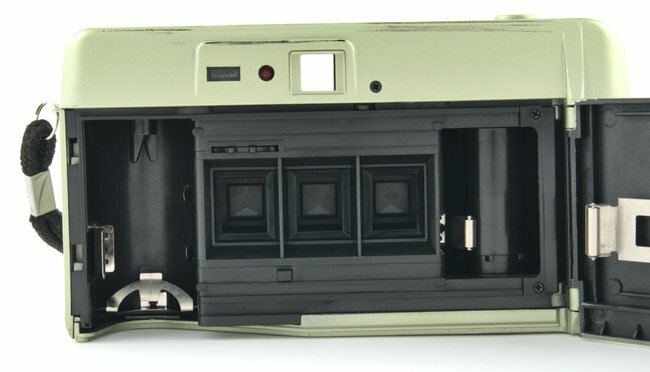
The manual lists three speeds of 35 film that is recommended for use with the camera, ISO 100, 200, and 400. However, the camera does not have a DX reader or any way to set the ISO. Taking that into account, I’d recommend using ISO 400 speed film with the Trio 3D.
Three pictures will be captured, one for each of the lenses. They will appear as three frames on the negative. Each frame will be half the size of a standard 35mm frame.

The three half frames take up more room on a roll of film, so you will get fewer pictures than what is stated on the roll. The frame counter on the roll takes the extra size into account. 24, 16, or 8 will show on the frame counter when the roll is done.
- 36 exposures = 24 sets of pictures
- 24 exposures = 16 sets of pictures
- 12 exposures = 8 sets of pictures
Flash
Built-in Flash Range:
- 4 ft (1.2m) to 10 ft (3m) with ISO 100 film
- 4 ft (1.2m) to 14 ft (4.2m) with ISO 200 film
- 4 ft (1.2m) to 20 ft (6m) with ISO 400 film
3D Animated Gifs
3D animated gifs or “wigglegrams” can be made from the images taken from the camera. All you need to do is make each layer a single frame and align the main subject in the image.
This can be done in most image editors, with GIMP being a free open source option that does an excellent job.
Camera Review
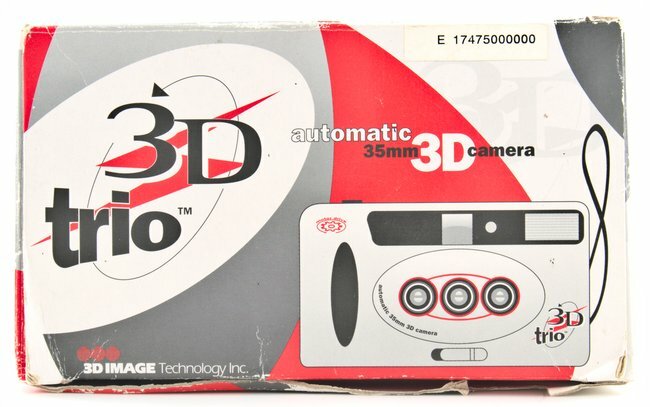
The flash on my camera doesn’t work, the motor drive is loud, and the build quality is what you would expect from a toy camera. In fact, the flash appears to be the same you would find used in a single use camera.
Personally, I do not want a built in flash or motor drive because those parts are the most likely to break and difficult to fix.
That’s why I prefer earlier models that do not have the motor drive. The advantage of the Nimslo 3D, Nishika N8000, or Nishika N9000 is that they all have flash hot shoes as opposed to built-in flashes.
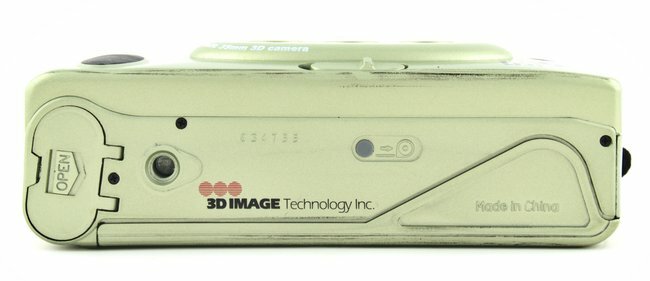
Alternative Cameras with Lenticular Lenses
Lenticular Cameras with 4 Lenses:
- Nimslo 3D
- Nishika N8000
- Nishika N9000
- MiniTech Quadra
Lenticular Cameras with 3 Lenses:
- ImageTech 3D fx (Kalimar 3D stereo camera)
- ImageTech 3D Wizard (Kalimar 3D Wizard)
- ImageTech 3D1000